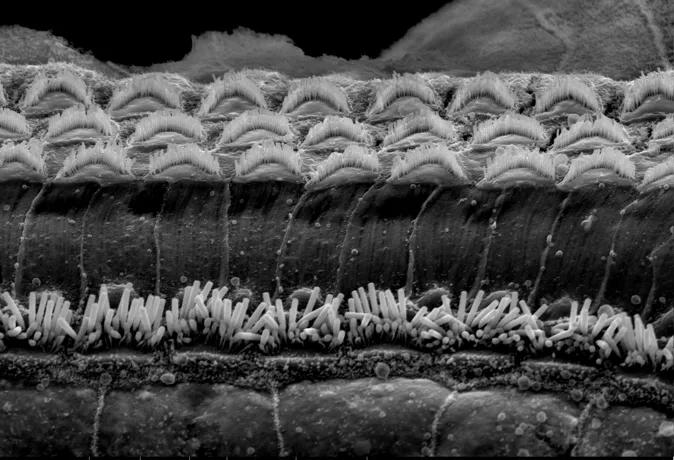Scanning Electron Microscopy (SEM)
In scanning electron microscopy (SEM) a focused electron beam is scanned across the surface of the specimen eliciting the emission of secondary electrons that generate an image showing topographical detail. Depending on how deep within the sample the electrons are generated, information about the sample elemental composition can also be gathered.
Most modern scanning electron microscopes will likely use several types of detectors to collect all different signals generated by the electrons and the sample. This allows the user to optimally detect, capture, collect and display other analytical and imaging modes as desired (such as energy dispersive x-ray spectroscopy) enabling mapping of different elemental species within the sample’s area of interest.
As with TEM samples, SEM samples need to withstand vacuum. Therefore they also require specific preparation methods.
SEM is used to provide images from low to very high magnification (200X – 1.106X) with resolution up to 6Å, depending on the microscope specification.
Examples of use
SEM is used to image a wide range of different specimens from life and material sciences including:
- imaging of cell surfaces
- imaging of the interaction between a cell and its substrate
- effects of genetic mutations on overall structure of an organism
- identification of exogenous materials
- tissue engineering
- research on drug delivery and new therapies
- quality control of pharmaceutical preparations
- examination of trace evidence in forensic science
We have a strong collaboration with the Dental Institute, where our benchtop SEM is the perfect tool for investigating:
- resin composite dental restorative material that has been treated with different polishing regimes for comparison
- slabs of enamel that have been covered with a restorative composite and sand blasted (for energy dispersive spectroscopy analysis in order to identify said enamel and composite areas)
- endodontic files that have broken during surgical use
- split tooth roots to investigate debris in the root canal
Equipment available
- JEOL NeoScope JCM 6000Plus
- JEOL JSM 7800F Prime

